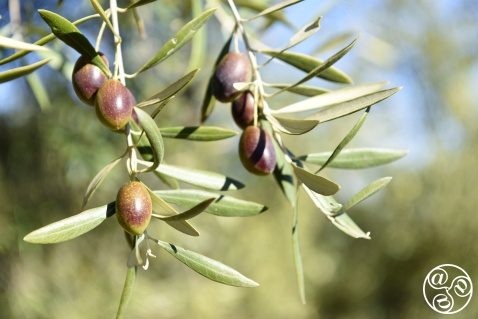
Spain produces more than 250 different varieties of olives © Michelle Chaplow |
|
Spanish Olives
Spain produces more than 250 different varieties of olives to be eaten whole or pressed into olive oil. In reality, olives are a very bitter fruit and in order to eat them this bitter flavour has to be mitigated. This is done by treating the olives with an alkaline substance such as Sodium Hydroxide, a strong salt solution or with special techniques that use water. Later the olives have to be further treated – pickled or dried, for example - before they are ready to be eaten.
Olives are served in Andalucia both whole and pitted. Whole olives are a favourite both as appetisers and in fresh salads. Perhaps surprisingly, salads often contain whole olives with pits that surprise the unsuspecting foreigner.
Pitted green olives are usually stuffed with red peppers or anchovies and make a nice “tapa” to accompany a glass of Spanish red wine. There are also numerous varieties and preparations sold in open vats in local markets and even large supermarkets. This is the ideal way to sample the Andalusian olive at its best.
Do beware, however, that olives are extremely high in salt and contain as much as 2,500 miligrams of salt for just 100 grams of product! It is best, therefore, to limit your consumption of this scrumptious
The main varieties of olives cultivated in Andalucia are as follows:
Picual - This is the most widely extended variety. It represents 50 percent of Spain’s total crop and is cultivated throughout Andalucia. The picual olive is so popular because it produces plenty of good quality oil that is rich in anti-oxidants. It is also a fairly stable oil that doesn’t go rancid easily.
Hojiblanca - This well-loved variety of Spanish olive accounts for around 15% of Andalucia’s total olive crop. It is mainly found in Málaga, Córdoba, Cádiz and Granada. The name “hojiblanca” translates as “white leaf” and this comes from the leaves’ silvery colour that produces a unique sheen in the sunlight. Hojiblanca olives are eaten as black olives and they are also used to produce a pleasant, very slightly bitter flavoured, green olive oil that is particularly low in saturated fat.
Manzanilla - Another Andalusian variety, Manzanilla olives are primarily used for table olives. They have a meaty texture, a slightly salty flavor, and produce a mild and slightly sweet oil with a nutty flavor
Lechín de Sevilla – These olives from Seville province are typically mixed in with others to produce blends of olive oil.
Verdial de Vélez-Málaga - As you would imagine, this olive is cultivated around Vélez-Málaga in the province of Málaga. It is known as a particularly sweet olive.

